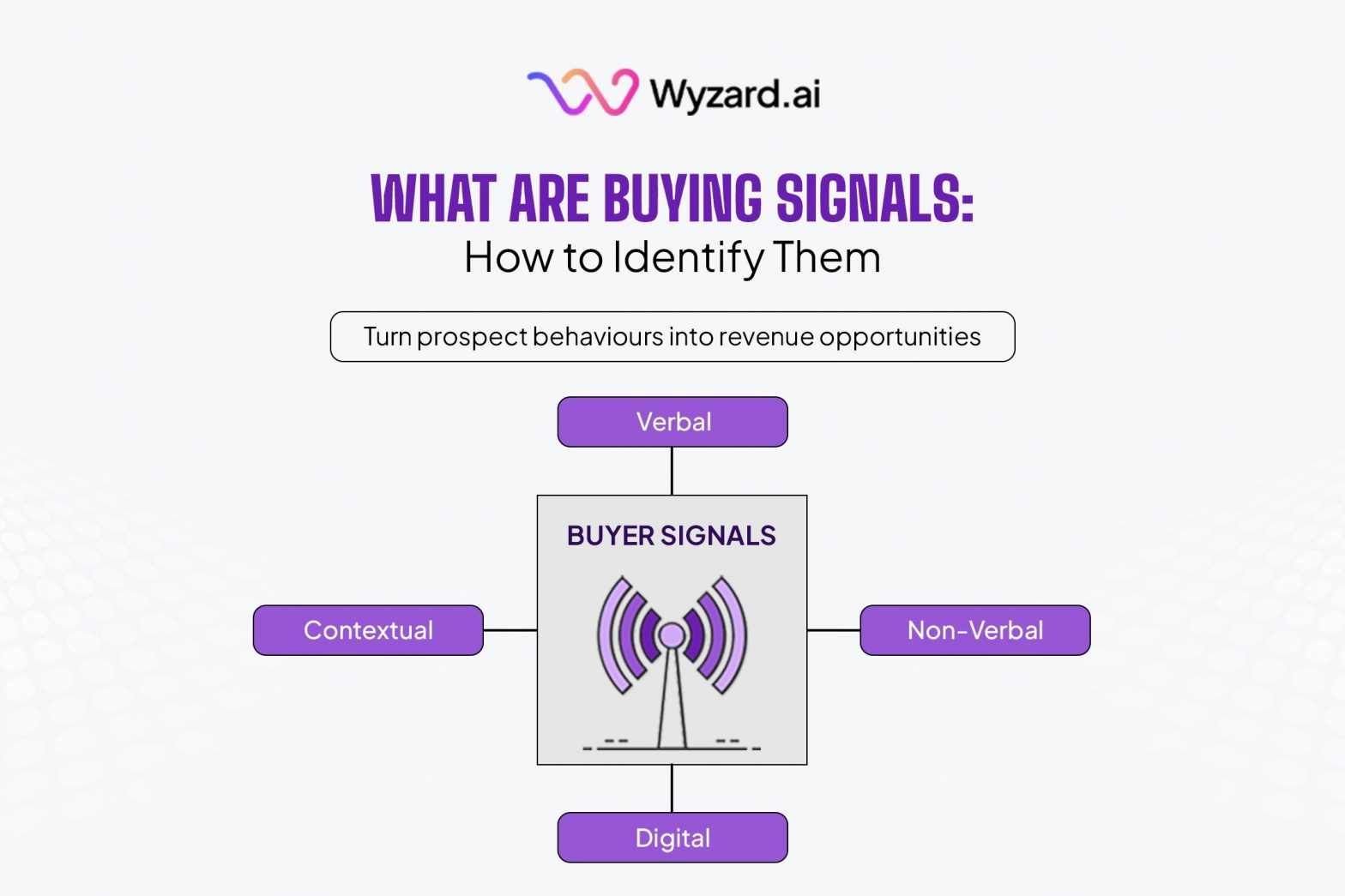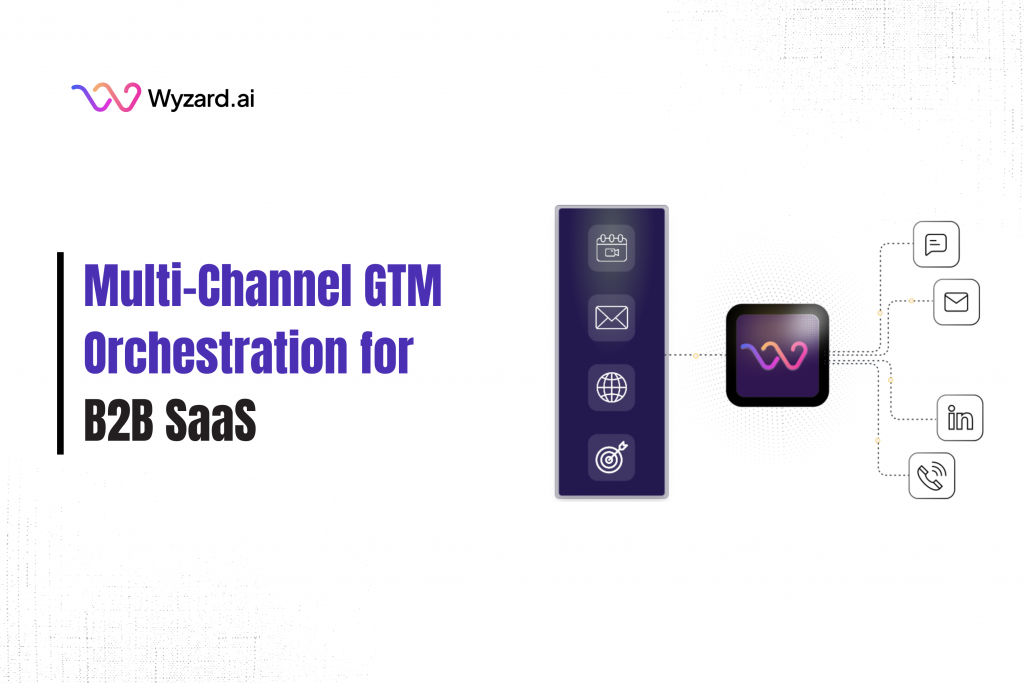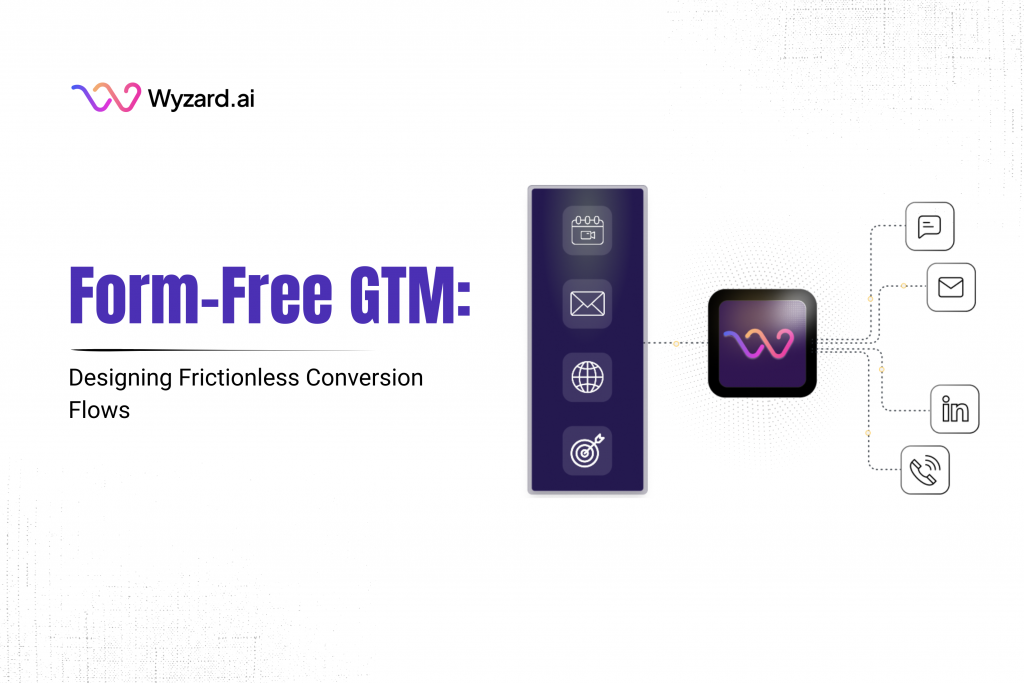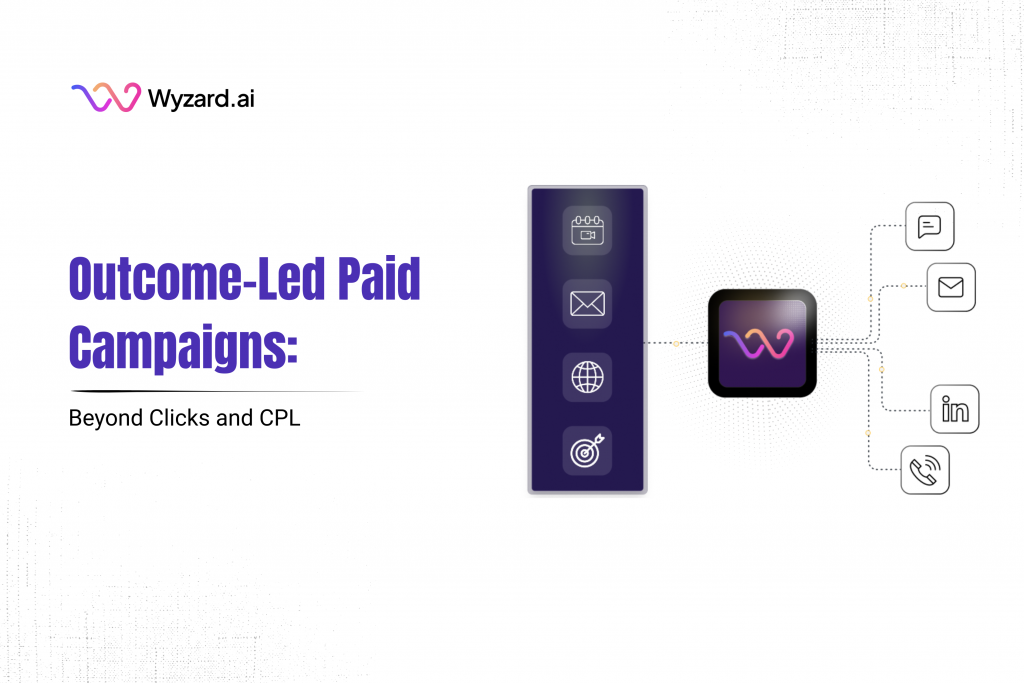If you run marketing or revenue for a B2B SaaS company, the goal is clear: turn GTM spend into ...

Subscribe Now
In today’s competitive SaaS environment, understanding buying signals is crucial to refining inbound performance and accelerating lead qualification. Marketers often ask, “what are buying signals in sales?” because these cues indicate when a prospect is ready to engage and convert. This article will walk you through the key types of buying signals, how to recognize them, and the best practices for following up, ensuring you capture and nurture high-intent leads using data-backed insights and best practices.
What Are Buying Signals in Sales: Understanding the Basics
Buying signals are the clues left by prospect behavior that indicate interest or readiness to buy. These signals can include verbal comments during calls, non-verbal cues such as body language, or digital footprints like website visits and content engagement. When you know what buying signals in sales are, you can direct your efforts to nurture the prospects who are already halfway to conversion.
In a typical sales scenario, buyer signals might show up as:
- Verbal cues: Prospects asking about pricing, delivery, or customization.
- Behavioral cues: Interaction with demos, repeated visits to pricing pages, or downloading gated content.
- Contextual signals: Bringing team members into a discussion or mentioning comparative products.
By recognizing these natural signals, your team can pivot from a generic pitch to a tailored response that speaks directly to the prospect’s needs.
Recognising Buying Signals Sales (Verbal, Non-Verbal, and Digital Cues)
Identifying buying signals in sales requires attention to both face-to-face interactions and digital behavior. In sales calls or video meetings, pay close attention to the tone, speed of response, and body language. A prospect who leans in or asks detailed questions is often more interested than one who simply nods along.
Digital platforms offer additional signals. For example, when prospects repeatedly visit your site’s product or pricing pages, it shows deep consideration. Downloading industry-relevant white papers or engaging with interactive content are further affirmations that the buyer is researching before making a decision.
Tracking all these signals can be challenging without the right tools. Wyzar.ai simplifies this by unifying these actions, ensuring that every signal, be it verbal, non-verbal, or digital, is captured and acted upon instantly.
How to Identify Online Buying Signals (Tools and Techniques)
Online buying signals are hidden in the behavior of your website visitors. How to identify online buying signals mainly involves monitoring digital activities. When a visitor contacts you through live chat or clicks through multiple pages on your website, these actions indicate that they are considering your solution.
Here are the key techniques for capturing these digital footprints:
- Digital Engagement Monitoring: Use analytics to track repeated visits to product pages, downloads of case studies, or sign-ups for demos. Each interaction offers a clue about the prospect’s intent.
- Real-Time Interaction Tools: Platforms like wyzard.ai, which include features like agentic chat, provide immediate engagement, so your team can collect buyer signals the moment they occur. This ensures that no lead is left waiting while you piece together scattered data.
- Unified Data Platforms: Integrated systems consolidate information from website visits, email clicks, and social interactions. With a single view, your marketing and sales teams can focus on prospects who are showing measurable intent.
Incorporating these tools turns the process of identifying buying signals into an automated yet human-supervised workflow. This method not only increases responsiveness but also reduces the chance of misinterpreting or overlooking key buyer actions.
| Signal Type | Indicator | Example in Sales |
| Verbal Signals | Direct questions about pricing or features | “What is the cost of implementation?” |
| Non-Verbal Signals | Body language, eye contact, and physical gestures | Leaning in during a demo, smiling, or nodding in agreement |
| Digital Signals | Website clicks, demo sign-ups, and content downloads | Repeated visits to the product page or downloading a case study |
| Contextual Signals | Organizational changes involving stakeholders | Bringing in team members for a discussion on pain points |
Buying Signals Follow-Up: Best Practices for Converting Prospects
Once you’ve recognised that buying signals are present, your next step is to ensure that your follow-up is swift, precise, and tailored. Successful buying signals follow-up requires:
- Quick Response Time: Acting on new information as soon as it appears is critical. An immediate, well-informed reply to an inquiry or demo request can set you apart from competitors.
- Personalized Communication: Use the insights you gather to create targeted messaging that speaks directly to the prospect’s needs. For instance, if a customer asks about advanced features, your follow-up should immediately address those points and provide actionable details.
- Multi-Channel Engagement: Integrate the wyzard.ai products, such as agentic email and agentic InMail, to reach prospects on their preferred platform. This ensures a seamless transition from inquiry to conversion.
Pointers for effective follow-up:
- Prioritize high-intent leads: Use your CRM to segment prospects based on their engagement levels.
- Incorporate rich media: Use product demos and case studies to supplement your follow-up emails.
By combining these approaches, your team will be well-equipped to manage the subtle nuances of buyer interactions, turning signals into solid sales opportunities.
Traditional Methods vs. Wyzard.ai Approach
| Approach | Signal Capture | Response Time | Follow-up Quality |
| Traditional Methods | Manual tracking across various tools | Often delayed due to data silos | Generic, delayed responses leading to missed signals |
| Wyzard.ai | Unified, automated live signal capture | Near-instant engagement due to centralized data | Automated yet human-supervised follow-ups ensuring personalized, timely communication |
By comparing these approaches, it’s clear how delayed and scattered follow-ups can cost you revenue. Wyzard.ai’s system brings all buying signals together and triggers fast, targeted follow-ups, ensuring no lead loses its momentum.
Pointers for Effective Follow-up:
- Prioritize High-Intent Leads: Use real-time data to segment and focus on prospects showing clear buyer signals.
- Employ Multi-Channel Engagement: Ensure follow-ups are delivered via the prospect’s preferred communication channel, whether it’s via email, chat, or even Agentic InMail.
With these follow-up best practices, your sales team can seamlessly convert intent into revenue.
How Wyzard.ai Connects the Dots: Your Signal-to-Revenue AI
Wyzard.ai is designed to solve one critical problem: losing buyer intent due to scattered signals. By connecting your digital tools and capturing signals live, Wyzard.ai transforms every buyer signal into an actionable revenue opportunity.
Instant Signal Capture:
Wyzard.ai continuously monitors digital interactions and compiles key buying signals, whether a prospect is engaging on your website or interacting with your emails. By ensuring that signals never fall through the cracks, Wyzard.ai keeps your GTM teams always informed.
Orchestrated GTM Actions:
When a buying signal is detected, Wyzard.ai automatically triggers a series of actions across channels. Integrate with wyzard.ai, which has features like Agentic Chat and Agentic Email, and send out personalized messages while maintaining a human touch through supervised responses. This orchestration helps convert intent into clear opportunities without delay.
Seamless Integrations for Proactive Engagement
Wyzard.ai’s approach unifies various data sources through seamless Integrations. This unified view allows your team to track and act on buyer signals instantly, ensuring that every potential lead is followed up on efficiently and effectively. Explore more about orchestrating revenue opportunities on our Signal to Revenue blog.
By acting as both the connector and orchestrator, Wyzard.ai turns every buying moment into a strategic opportunity to drive revenue. It removes the friction of manual handoffs and ensures that your GTM teams can focus on what matters: converting high-intent leads into loyal customers.
Final Thoughts
Understanding what buying signals are and knowing how to identify buying signals can make all the difference in your sales process. By realigning your approach to focus on both digital footprints and real-time interactions, you not only respond to high-intent leads faster but also reduce the friction that slows conversion.
Modern SaaS marketers and GTM teams must embrace these indicators, integrating digital tools and personalised follow-ups to ensure that every touchpoint counts. With buying signals as your guide, you can turn fleeting interest into lasting engagement and high-quality leads into satisfied customers.
Wyzard.ai is here to help. As your signal-to-revenue AI, our platform is designed to engage, qualify, and convert. Ready to transform your lead engagement process? Book a Demo and discover how Wyzard.ai can support your marketing goals. Whether it’s through our seamless agentic chat or tailored email responses, we’re committed to making every interaction count.
FAQs
Buying signals are clear cues from prospects that show interest and readiness to buy. They help prioritize leads, enabling teams to focus on those with genuine intent. Acting on these signals speeds up the sales process and boosts conversions.
Monitor digital behaviors like repeated website visits, content downloads, and demo sign-ups to capture buyer interest. Regularly checking email interactions and chatbot engagements reveals when prospects are actively considering a purchase. Tools like Wyzard.ai automate this process for timely responses.
Typical buying signals include verbal cues, such as specific questions about features or pricing, and non-verbal cues, like body language during meetings. Digital signals also include activity on your website and engagement with your content. Each type provides insights into the prospect’s buyer intent.
Wyzard.ai connects web, email, and chat channels to capture buyer signals in real time. The system records every interaction and triggers automated, human-supervised follow-ups. This unified process ensures no lead receives delayed or generic responses.
Follow up as soon as a buying signal is detected to keep the prospect engaged. Quick, personalized responses show that you value each lead and prevent interest from cooling off. Timely follow-ups increase the chances of turning intent into revenue.
Integrate all digital signals and use coordinated follow-ups to make every engagement count. Quick responses and tailored communications ensure that buyer interest moves smoothly through the sales funnel. This approach transforms buyer intent into measurable business outcomes.
Other blogs
The latest industry news, interviews, technologies, and resources.
Form-Free GTM: Designing Frictionless Conversion Flows
A visitor lands on your pricing page. They are ready to talk, not to wrestle with a 12-field form. ...

December 8, 2025
Outcome-Led Paid Campaigns: Beyond Clicks and CPL
You put serious money into paid media. Dashboards show strong CTR and healthy CPL. The next slide hits and ...

 We’ve secured funding to power Signal-to-Revenue AI to GTM teams globally. →
We’ve secured funding to power Signal-to-Revenue AI to GTM teams globally. →


